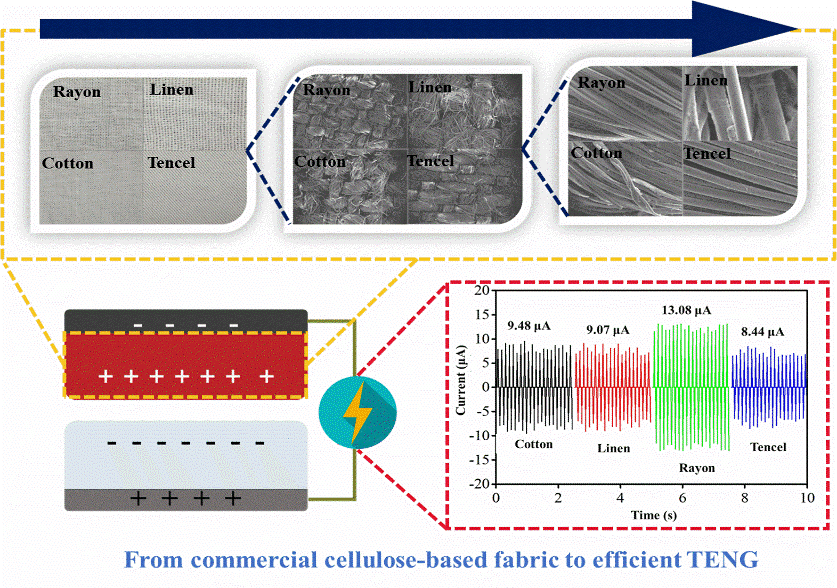Cellulose-based fabrics triboelectric nanogenerator: Effect of fabric microstructure on its electrical output
DOI:
https://doi.org/10.55713/jmmm.v33i3.1673Abstract
At present, fabric-based triboelectric nanogenerator (TENG) has been paid attention and developed for self-power generation systems with wearability for E-textiles, especially cotton. However, there are many commercial cellulose-based fabrics with different fiber characteristics and fabric structures that gain possibility to effect on TENG performance and has been underreported. This work presents the fabrication of the textile TENG by using four types of commercial cellulose-based fabrics as friction layer and compare the electrical output efficiency relating their molecular structure, fabric structure and surface morphology characteristics. As shown by the electrical output, though all fabrics can generate electricity for TENG device, nevertheless, the output signal is different because of their different total surface area of the fabric, affecting by different microstructure. The rayon fabric contains the smallest size fiber with highest surface area at the same woven structure. The obtained output voltage (VOC) and current (ISC) of ⁓23 V and ⁓13 µA are ⁓1.8 times higher than most studied cotton fabric. This research demonstrated the importance of the microstructure and surface area of the fabrics that significantly affect TENG properties. The investigation in this work will useful and knowledgeable to select fabric materials before improving and using them for energy harvesting devices.
Downloads

Downloads
Published
How to Cite
Issue
Section
License
Copyright (c) 2023 Journal of Metals, Materials and Minerals

This work is licensed under a Creative Commons Attribution-NonCommercial-NoDerivatives 4.0 International License.
Authors who publish in this journal agree to the following terms:
- Authors retain copyright and grant the journal right of first publication with the work simultaneously licensed under a Creative Commons Attribution License that allows others to share the work with an acknowledgment of the work's authorship and initial publication in this journal.
- Authors are able to enter into separate, additional contractual arrangements for the non-exclusive distribution of the journal's published version of the work (e.g., post it to an institutional repository or publish it in a book), with an acknowledgment of its initial publication in this journal.












